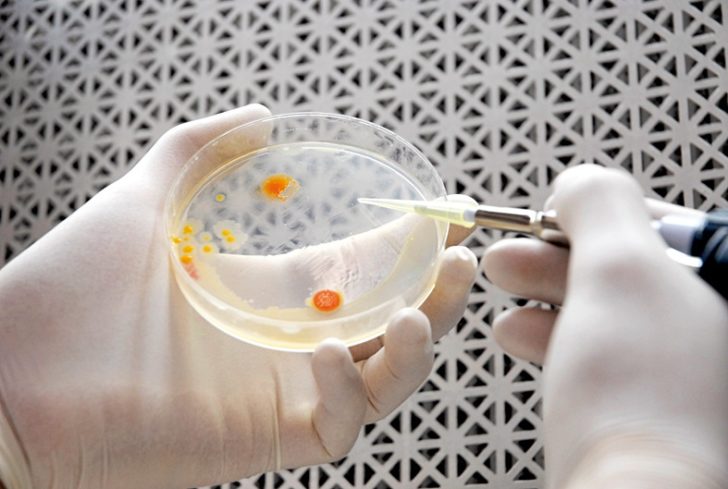Alternative plastics from waste material

An amount of 450 million tons of plastic are produced worldwide every year. To keep control of our plastic situation, scientists are researching alternatives to replace petroleum-based plastics. PHA may be a possibility since it is malleable just like conventional plastics.
PHA stands for polyhydroxylalkanoates. These are biopolymers, commonly referred to as bioplastic and they are similarly malleable as plastics derived from fossil sources. “But that’s just about it in terms of similarities”, says Dr.-Ing. Sebastian L. Riedel, who is conducting research on PHA together with Dr.-Ing. Stefan Junne. Bioplastics are not all the same either. “Half of the two million bioplastics that are being produced yearly are not biologically degradable. The other half is only partially biodegradable.” In this regard, PHA is made from a different cloth. It can be fully degraded into water and carbon dioxide in soils and water and is therefore not expected to be a health risk.
PHA can be synthesized from several different materials, including corn, sugar, glycerin or palm oil. Riedel and Junne had another initial substance in mind, that does not harm climate or isn’t a foodstuff like corn is because they deem these materials as problematic. Looking for alternatives, they decided on waste fats stemming from animal carcasses in agriculture, gastronomy or the processing of food waste. In essence, they use leftovers and waste. One man’s trash is another’s treasure as these substance are valuable raw materials for the researchers.
Knallgas-bacteria use carbon from waste fats
PHA can exist in different forms, sometimes a shimmering, silky white film, sometimes looking almost like popcorn or detergent powder. But how is it synthesized from smelly brown fat?
“That is the result of a bacteria called Cupriavidus necator, also called Knallgas-bacteria. We let them do the hard work”, Riedel jokes. “We cultivate them in salt solution and feed them with nitrogen, phosphorous, oxygen and carbon. The carbon we provide from the waste fats. Then we just let them grow. Then, after some time, we cut off the nitrogen supply. They react to this by converting excess carbon into PHA to deposit as energy reserve in their cells. If we were to later start adding nitrogen again, the bacteria would first use the intracellular PHA for energy. But of course we don’t do that, since we want to harvest the produced PHA. So we extract it with solvents that can be partially regained after the process”, Riedel explains. The scientists are further working on alternative methods to reduce costs of the process and make it even more sustainable.
Foregoing palm oil
Riedel started his research on PHA ten years ago at MIT in the United States, where he worked with palm oil. “It is a very uncomplicated raw material for PHA production”, Riedel says. But palm oil plantations are a massive cause of deforestation. When he arrived at TU Berlin in 2012, he decided to forgo palm oil in his research. “Finding an alternative for plastics at the cost of the rain forest – that shouldn’t be the result of our research”, Riedel explains his decision. Since 2017, Riedel’s PHA research with biogenic residual materials has expanded within the field of bioprocess engineering, which has dedicated itself to developing sustainable biological processes.
Source (German only): https://www.chemie.de/news/1162929/bioplastik-aus-abfallfetten.html